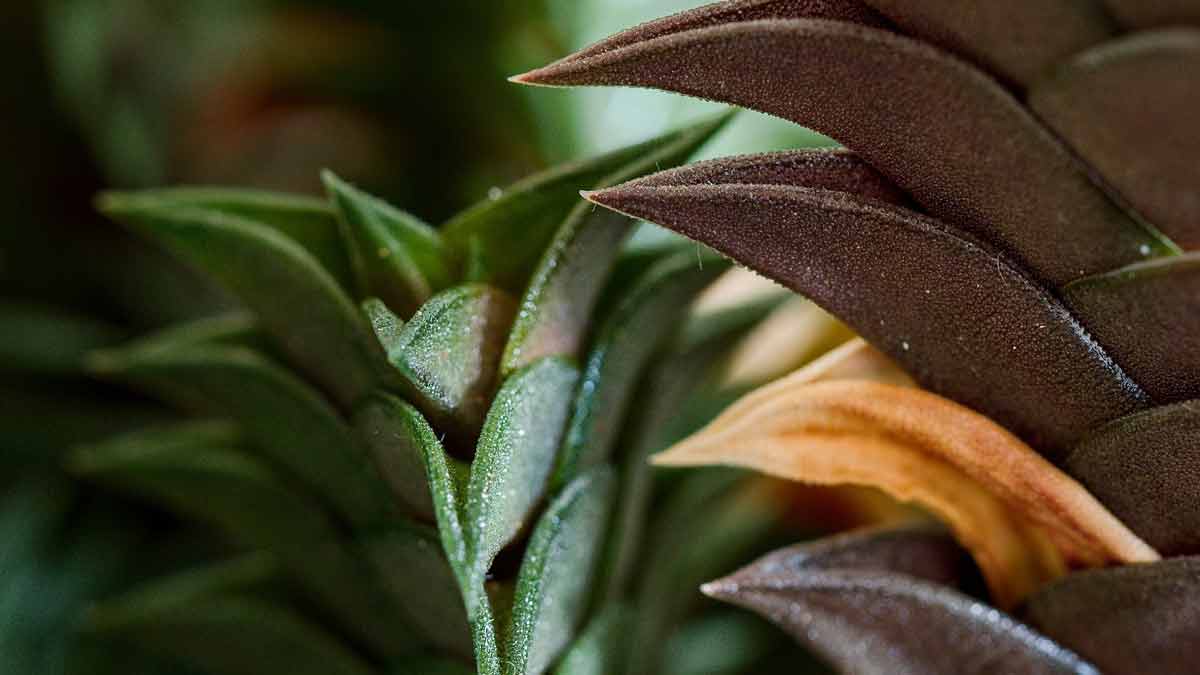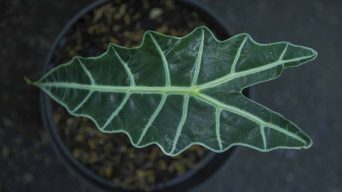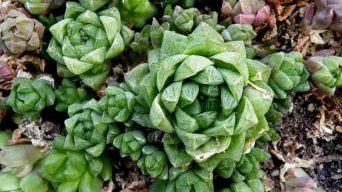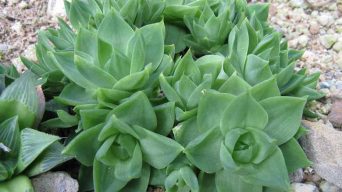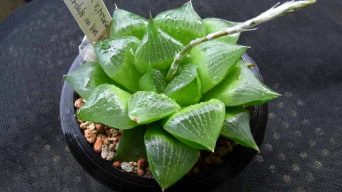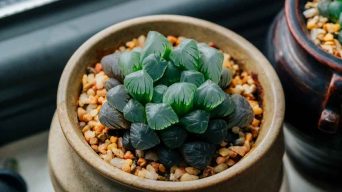If you’re a proud owner of a Haworthia plant, you may have noticed that its leaves are turning brown.
Although Haworthias are known for their hardiness and adaptability, they still require proper care and attention to stay healthy.
In this article, we’ll explore the top causes of why your Haworthia may be turning brown and provide solutions to help your plant thrive.
One of the most common causes of brown leaves in Haworthias is overwatering.
Haworthias are succulents and are adapted to survive in arid conditions, so they don’t require frequent watering.
Overwatering can cause the roots to rot, leading to brown leaves and, eventually, the death of the plant.
Another cause of brown leaves in Haworthias is exposure to direct sunlight.
Although Haworthias can tolerate bright light, direct sunlight can scorch the leaves, causing them to turn brown.
To keep your Haworthia healthy and thriving, it’s essential to understand the causes of brown leaves and take action to prevent them.
By following the solutions we provide in this article, you can ensure that your Haworthia stays healthy and vibrant for years to come.
Causes of Haworthia Turning Brown
If you have noticed that your Haworthia is turning brown, it is essential to identify the underlying cause and take appropriate measures to remedy the situation.
Here are some of the most common causes of brown leaves in Haworthia plants.
1. Excessive Sunlight
Haworthia succulent plants prefer bright indirect light, and exposure to direct sunlight can cause brown spots or brown tips on the leaves.
If your plant is getting too much sunlight, move it to a shadier spot or use a sheer curtain to filter the light.
2. Temperature Stress
Haworthia plants are sensitive to extreme temperatures.
Exposure to low temperatures can cause brown spots or brown leaf tips on the leaves, while exposure to high temperatures can cause the leaves to turn brown and dry out.
Make sure to keep your succulent plant in a room with a stable temperature, and avoid placing it near drafty windows or air conditioning vents.
3. Improper Watering
Overwatering or underwatering can cause leaf browning in Haworthia plants.
If the soil is too wet, the roots can rot, leading to brown leaves. On the other hand, if the soil is too dry, the leaves can turn brown and dry out.
Make sure to water your Haworthia plant only when the soil is dry to the touch, and ensure that the pot has proper drainage to prevent excess water from accumulating in the soil.
4. Fungal Diseases
Fungal diseases can cause brown spots or brown tips on the leaves of Haworthia plants.
These diseases are often caused by overwatering or poor air circulation.
To prevent fungal diseases, make sure to water your succulent only when the soil is dry, and ensure that the plant has adequate air circulation.
5. Root Rot
Root rot is a common problem in Haworthia plants that are overwatered.
The roots become waterlogged and begin to rot, leading to brown leaves.
To prevent root rot, make sure to water your succulent only when the soil is dry, and ensure that the pot has a proper drainage hole.
6. Environmental Stress
Environmental stress, such as low humidity or exposure to chemicals, can cause brown leaves in Haworthia plants.
To prevent environmental stress, make sure to keep your plant in a room with a stable temperature and humidity level and avoid exposing it to chemicals or pollutants.
7. Pest Infestations
Pests, such as mealybugs or spider mites, can cause brown leaves in Haworthia plants.
These pests feed on the plant’s sap, causing the leaves to turn brown and dry out.
To prevent pest infestations, make sure to inspect your succulent regularly and treat any infestations promptly.
8. Soil Mix and Potting
Using the wrong soil mix or potting can cause brown leaves in Haworthia plants.
Haworthia plants prefer a gritty soil mix that drains well.
Make sure to use a pot with proper drainage holes and a soil mix that is suitable for succulent plants.
9. Fertilization
Overfertilization or using the wrong type of fertilizer can cause brown leaves in Haworthia plants.
Make sure to use a fertilizer that is suitable for succulent plants and follow the recommended dosage.
Overfertilization can cause the roots to burn, leading to brown leaves.
Solutions for Healthy Haworthia
If you’ve noticed that your Haworthia is turning brown, don’t worry – there are several solutions that can help you restore its health.
Here are some tips to keep your Haworthia healthy and thriving.
1. Adjusting Sunlight Exposure
One of the most common causes of browning in Haworthia is exposure to too much sunlight. If your succulent is in direct sunlight, it may get too much light.
Conversely, if your plant is not getting enough light, it may also turn brown.
To prevent this, adjust your plant’s location to a spot that receives bright indirect sunlight for a few hours daily.
This will help your Haworthia to maintain its green color and thrive.
2. Temperature Management
Haworthia prefers moderate temperatures, and it can be sensitive to extreme temperatures. If your plant is exposed to too hot or too cold temperatures, it may turn brown.
To prevent this, keep your plant in a room with a temperature between 60°F and 80°F.
Avoid placing your plant near air conditioning vents or radiators, as this can cause temperature fluctuations that can harm your plant.
3. Watering Best Practices
Overwatering or underwatering your Haworthia can also cause it to turn brown.
To prevent this, make sure to water your plant only when the soil is completely dry.
When you water your plant, make sure to saturate the soil thoroughly, but avoid letting it sit in standing water.
Also, avoid getting water on your plant’s leaves, which can cause brown spots.
4. Fungal Disease Prevention
Fungal diseases can also cause browning in Haworthia.
To prevent this, ensure your plant is not exposed to too much moisture, as this can create a breeding ground for fungal diseases.
Also, make sure to use a well-draining soil mix and avoid overwatering your plant.
Treat your plant with a fungicide if you notice any signs of fungal disease, such as yellowing or wilting leaves.
5. Pest Prevention
Pests, such as spider mites or mealybugs, can also cause browning in Haworthia.
To prevent this, inspect your plant regularly for signs of pests, such as webbing or sticky residue.
If you notice any signs of pests, treat your plant with an insecticide or use natural pest control methods, such as neem oil or insecticidal soap.
6. Root Health Maintenance
Healthy roots are essential for a healthy Haworthia.
To maintain root health, make sure to use a well-draining soil mix and avoid overwatering your plant.
Also, make sure to repot your Haworthia plant every year or two to prevent root-bound conditions.
7. Creating an Optimal Environment
Creating an optimal environment for your Haworthia can help it to thrive.
This includes providing it with the right amount of sunlight, temperature, and humidity. It also means using a well-draining soil mix and watering your plant correctly.
8. Seasonal Care
Finally, it’s important to provide your Haworthia with seasonal care.
During the winter months, for example, you may need to reduce watering and provide your succulent with extra humidity.
During the summer months, you may need to adjust your plant’s location to prevent it from getting too much direct sunlight.
By following these tips, you can help your Haworthia to maintain its green color and thrive.
Remember to keep an eye on your succulent and adjust your care routine as needed to keep it healthy and happy.
Final Thoughts
Your Haworthia turning brown can be caused by a variety of factors, including overwatering, underwatering, too much sun exposure, and pests.
Identifying the root cause and taking appropriate action can save your plant from further damage and help it thrive.
Always check the soil moisture level before watering and ensure the pot has proper drainage.
If your succulent receives too much sun, consider moving it to a shadier location or providing shade.
Additionally, regularly inspect your plant for any signs of pests and take prompt action if necessary.
Your Haworthia can be a beautiful and healthy addition to your home or office with proper care and attention.
Don’t be discouraged if you encounter some challenges along the way – with patience and persistence, you can help your plant recover and flourish.

